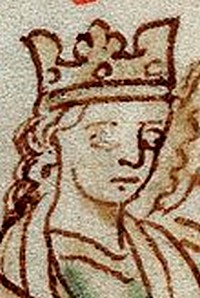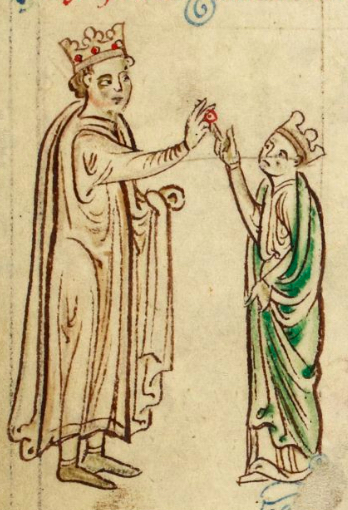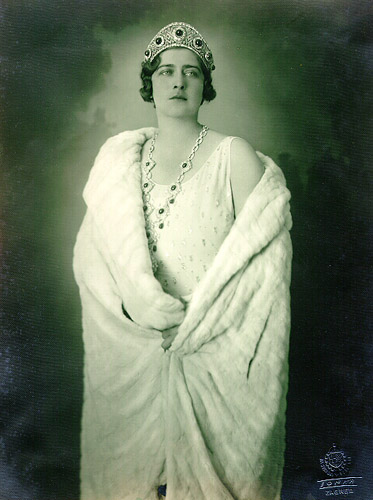by Scott Mehl © Unofficial Royalty 2014

Crown Prince Hussein of Jordan; Credit – Royal Hashemite Court of Jordan
Crown Prince Hussein bin Abdullah of Jordan was born at the King Hussein Medical Center in Amman, Jordan on June 28, 1994, the eldest child of the then Prince Abdullah bin Hussein and Rania al Yassin. His father was the eldest son of King Hussein I of Jordan and his second wife, Princess Muna al-Hussein (born Antoinette Gardiner).
At the time, Prince Abdullah, despite being the eldest son, was not the heir-apparent. The succession laws in Jordan follow agnatic primogeniture (eldest son), but also allow for the reigning King to appoint whomever he wishes as his heir and Crown Prince. King Hussein had named his younger brother, Prince Hassan, as Crown Prince in 1965. This would remain until just days before King Hussein’s death.
On January 24, 1999, just two weeks before his death, King Hussein appointed his son Abdullah as Crown Prince, with the wish that Abdullah would name his younger half-brother Prince Hamzah as his heir. When the King died on February 7, 1999, Abdullah became King and respected his father’s wishes, appointing Hamzah Crown Prince.
However, in 2004, Abdullah stripped Hamzah of the Crown Prince title. As he did not name a replacement, this made the young Prince Hussein his father’s heir-apparent under the existing succession laws. On July 2, 2009, the King issued a decree formally granting Prince Hussein the title of Crown Prince.
Crown Prince Hussein has three younger siblings:
- Princess Iman (born 1996), married Jameel Thermiotis, born Dimitrios Alejandro Thermiótis Hernández, had one daughter
- Princess Salma (born 2000)
- Prince Hashem (born 2005)
Hussein completed his secondary education at King’s Academy in Madaba-Manja, Jordan in 2012. In 2016, the Crown Prince graduated from Georgetown University in Washington DC with a degree in international history. He holds the rank of Captain in the Jordanian Armed Forces. In August 2017, Crown Prince Hussein graduated from the Royal Military Academy Sandhurst, a family tradition.

September 2015: Crown Prince Hussein attends a meeting with his father King Hussein and the American Secretary of State John Kerry; Photo Credit – Wikipedia
The Crown Prince often attends state and military functions with his father and takes an active interest in the welfare of the Jordanian people. His first official event was Armed Forces Day in 2010 when he represented his father. He has also served as Regent several times when his father is out of the country. On April 23, 2015, the then-20-year-old Crown Prince Hussein became the youngest person ever to chair a United Nations Security Council session.

Rajwa Al Saif and Crown Prince Hussein of Jordan; Credit – Queen Rania of Jordan Facebook page
On August 17, 2022, the Royal Hashemite Court of Jordan announced the engagement of Crown Prince Hussein and Rajwa Khaled bin Musaed bin Saif bin Abdulaziz Al Saif. Born in Riyadh, Saudi Arabia on April 28, 1994, Rajwa is the youngest of the four children of Khalid Al Saif, the CEO of the Al Saif Group, and his wife Azza Al Sudairi. The couple was married on June 1, 2023, at Zahran Palace in Amman, Jordan. About thirty minutes after the wedding ceremony, the Royal Hashemite Court issued a decree elevating Rajwa to a Princess of Jordan with the style and title Her Royal Highness Princess Rajwa Al Hussein. The title Crown Princess is not typically used in Jordan.
Crown Prince Hussein and Princess Rajwa have one daughter who is not eligible to be ruler of Jordan. The constitution of Jordan states that only legitimate, male, mentally sound, Muslim, male-line descendants of King Abdullah I are eligible to be King.
- Princess Iman bint Al Hussein of Jordan (born August 3, 2024)
This article is the intellectual property of Unofficial Royalty and is NOT TO BE COPIED, EDITED, OR POSTED IN ANY FORM ON ANOTHER WEBSITE under any circumstances. It is permissible to use a link that directs to Unofficial Royalty.



















